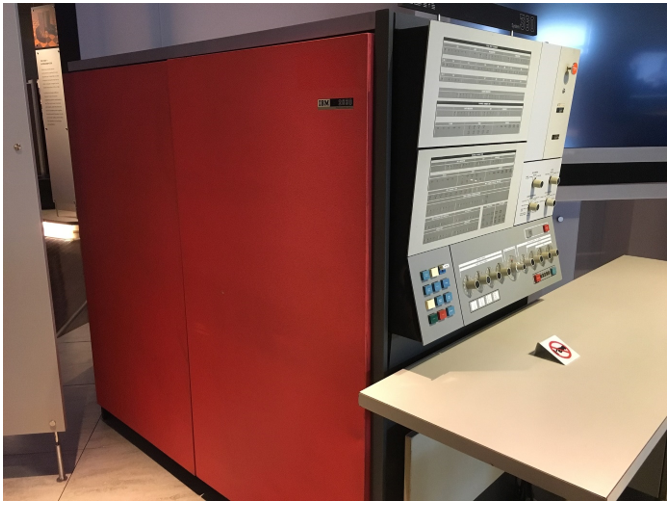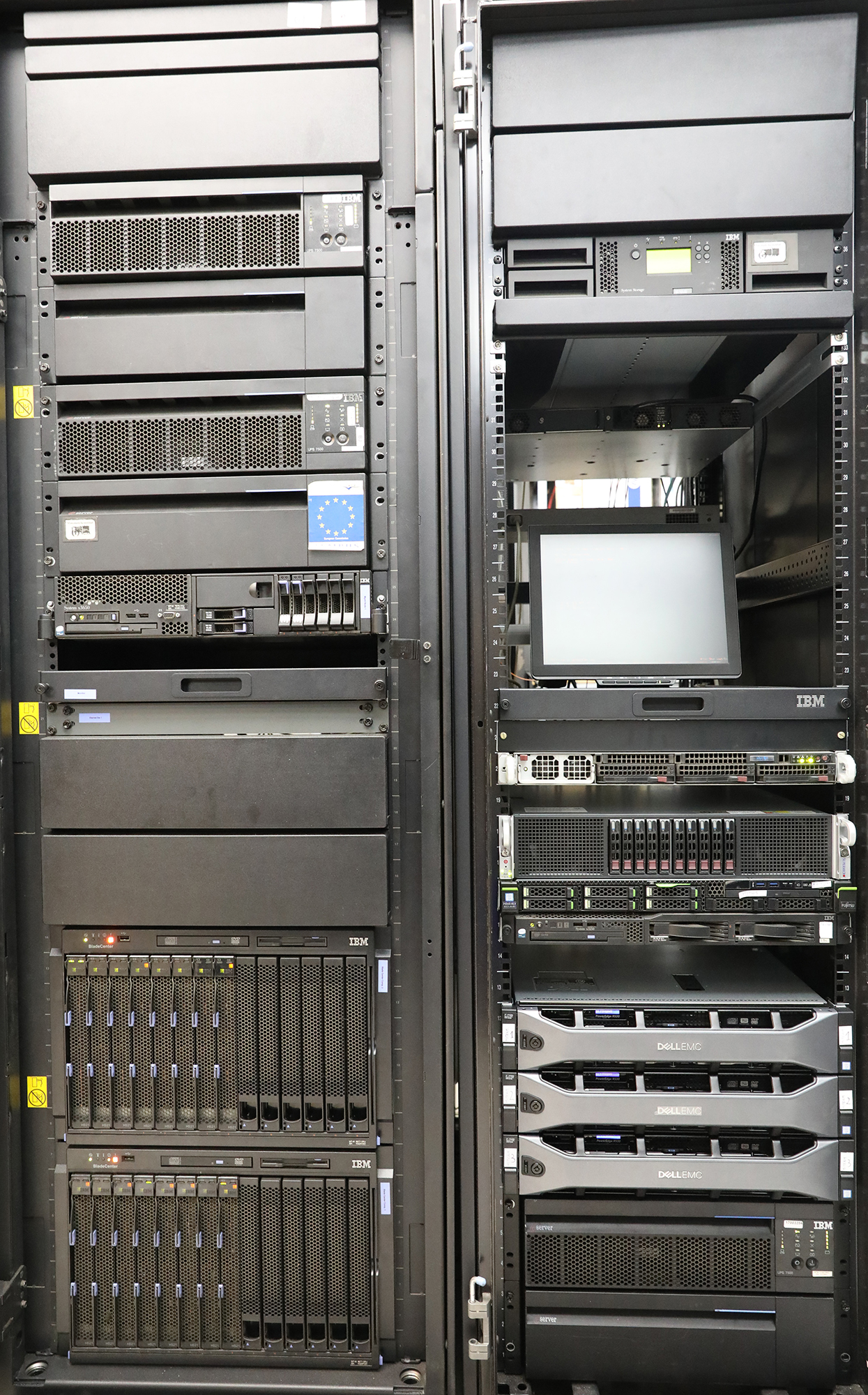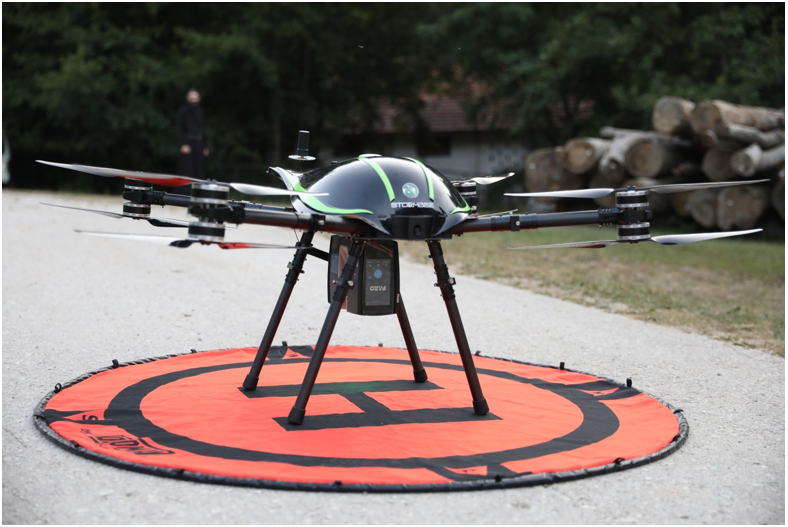The origins of the Department of Computer Science are related to the purchase of an IBM 360 computer in 1968, which, at that time, was the most powerful one in Belgrade. The beginnings of computer science at the Institute were a form of research extension in the field of mathematical logic, but also the development of the idea of applying mathematics as a support for solving applied research and development problems. The steps in establishing the Department for Computer Science comprised the successful implementation of a number of basic research projects, technological development, specialised projects contracted with state and economic entities in Serbia and international projects. As an illustration of the realised projects, the following are stated: "Mathematical logic, combinatorics and information processing: Fundamentals and applications of computing" (1996-2000), "New methods in cryptology and information processing" (2006-2010), "Development of new information and communication technologies, using advanced mathematical methods, with applications in medicine, telecommunications, energy, national heritage protection and education "(2011-2019).
In the year when the Institute celebrates its 75th anniversary, the Department of Computer Science has about thirty researchers who continue and expand the current scope of research and application, predominantly within the following areas:
- Security and privacy in digital space and blockchain technology;
- Optimisation techniques;
- Machine learning and decision theory;
- Selected mathematical methods of interest for computing;
- Digitalisation of our cultural, historical, scientific, and educational heritage with applications.
Department members have published their scientific results in the form of more than 500 references, of which more than 200 papers in the field of leading international publications. These results, according to Scopus, are cited more than 3000 times in leading international publications. The associates of the Department have also carried out intensive international cooperation, with more than two decades of cooperation with institutions in Japan, including The University of Tokyo and the National Institute for Advanced Industrial Science and Technology (AIST).
We will indicate the basic achievements in the areas mentioned above.
Security and privacy in the digital space and blockchain technology.
The Mathematical Institute SANU recognised the growing importance of research in the field of cryptology in the early nineties of the twentieth century and was among the first academic institutions to implement basic research and technological development projects in this field. Research activities in the field of cryptology were later extended to information security, privacy, and then blockchain technology. In the field of cryptology and its applications to security and privacy in the digital space, the main activities included the following: (1) evaluation of the security of cryptographic techniques for information security and privacy; (2) construction of cryptographic techniques for encryption and authentication of low implementation complexity which at the same time achieve high cryptographic security and reduce system overloads due to the application of cryptographic mechanisms; (3) application of error correction code results to enhance cryptographic security of encryption and authentication techniques; (4) improving some decoding techniques using approaches developed in cryptology; (5) advanced components and mechanisms for achieving security and privacy in the digital space. In the field of blockchain technology, the main activities included the following: (a) advanced blockchain consensus protocols that allow flexibility in the selection of necessary resources for participants in public blockchain networks, and particularly in the reduction of energy required for the operation of blockchain infrastructure; (b) improvement of the existing and new specialised applications of blockchain technology. Achievements in the field of security and privacy in digital space and blockchain technology are presented in more than 300 references as scientific articles in international journals, chapters in books, collections of papers in international conferences, various national publications, and include more than 40 technical solutions and 8 international recognised patents. These results have been cited more than 1,500 times according to the Scopus database. As an additional illustration of the international recognition of the results, it is stated that a member of the Department is included in the ranking list using the colloquial name "World's Top 2% Scientists by Stanford University".
International cooperation in this area has included projects with the European Union, Japan, the United States, India, Singapore and China.
The most significant current projects include the following: Application of artificial intelligence in blockchain technology (project of the Science Fund of the Republic of Serbia); Advanced Techniques for Blockchain Technology and Information Security (a project funded by the Shandong Computer Science Center of the Shandong Academy of Sciences, China); Applications of Blockchain Technology in Telecom Systems (project financed by Telekom Serbia).
Optimisation techniques.
The main activities of the group that is engaged in optimisation are aimed in the following directions: Modelling of optimisation problems; Development of methods for determining the optimal (exact) solution, which usually involves the application of an existing solver, such as CPLEX or Gurobi and their incorporation into the proposed algorithm, as well as the development of completely original methods based on branching and bounding, branching and cutting, and similar methodologies, which use information on the problem under consideration and incorporate it into the rules of the adopted methodology; Implementation of efficient heuristic and/or metaheuristic methods for determining an approximate high quality solution (better than the currently best or one that deviates as little as possible from the known optimal solution) in the shortest possible time.
To solve a large number of combinatorial optimisation problems, some of the most well-known metaheuristics have been successfully applied: Variable Neighborhood Search (VNS); Taboo Search (TS); Greedy Stochastic Adaptive Search Procedure (GRASP); Bee Colony Optimisation (BCO) method; Ant Colony Optimisation (ACO); Genetic Algorithms (GA), but many others as well.
In addition to concrete implementations of the mentioned metaheuristics, we are also working on their improvement, modification and hybridisation with the idea of increasing their efficiency when applied to complex problems and large examples.
The problems considered can be classified into the following groups: Various variants of the commercial traveller problem; Variants of location problems; Various variants of hub location problems; Variants of diversity problems (dispersion problems); Variants of vehicle routing problems; Variants of the problem of scheduling jobs (tasks) on a machine or multiprocessor architecture (cluster, grid, cloud).
Machine learning and decision theory.
The main activities were aimed at considering the possibilities for the application of machine learning algorithms in electric power and telecommunication systems. The application of machine learning algorithms in these areas contributes to technological progress and a simpler transition to Industry 4.0, with a focus on environmental protection, mitigation of climate change, reducing electricity consumption and optimising the operation of the considered systems. In addition, this research contributes to an easier transition from fossil to renewable energy sources and the preservation of sustainability. Machine learning models in the field of sustainability also contribute to the monitoring and control of factors influencing climate change such as pollution, environmental footprint, and available biocapacity. Furthermore, machine learning has been applied in the field of image and text classification, and CAPTCHE research has been conducted in order to obtain the necessary scientific knowledge that enables safer development of Industry 4.0, which includes digitalisation as a key component. Implemented projects include the following two: Development of Advanced Energy Management System (AdEMS) – funded by the European Bank for Reconstruction and Development's Green Innovation Voucher Program; Smart Water Management System (SWaMS) – funded by the European Bank for Reconstruction and Development's Green Innovation Voucher Program.
Selected mathematical methods of interest for computing.
The current research in this domain began as a basic research in the field of algebra, especially universal algebra, network theory and ordered set theory, as well as dealing with the problem of representation of algebraic networks via a network of weak congruencies. Later, research on fuzzy set-valued network and fuzzy logic and applications in various fields commenced. Omega algebraic structures are now in focus, which enable the observation of approximate identities. This is directly related to the system of closure on the network of weak congruencies of the initial algebra, taking the factor of algebra that fulfills the required identities. One of the important applications in this framework is the approximate solution to linear equations and systems of equations, which can be applied in various fields, and more recently in digital forensics, which is associated with COST action CA17124 – Digital forensics: evidence analysis via intelligent systems and practices. Researches within Omega-algebra and related topics have resulted in the publication of over twenty papers in the world's leading journals in these fields including Information Sciences, Fuzzy Sets and Systems, Soft Computing, International Journal of Computational Intelligence Systems, Cybernetics, The International Journal of Fuzzy Systems and others.
Digitisation of our cultural, historical, scientific, and educational heritage.
The goal of these activities was to apply computer techniques in order to achieve broader social goals. The achieved results are in the form of more than 30 technical solutions available both at the Mathematical Institute SANU and with those who purchased these technical solutions. The following realised projects are cited as an illustration: "Application of information technologies in digitalisation of scientific and cultural heritage", "Application of digitalisation of scientific and cultural goods in secondary education". Furthermore, as an illustration, it is stated that 31 mobile applications were created for the presentation of the national, historical, cultural, scientific and technical heritage of the Republic of Serbia.
Gallery

IBM 360 was the first computer in MISANU
(ArnoldReinhold - Own work, CC BY-SA 3.0,
link )

Active servers in MISANU 2021

Drone equipped by 3D scanner for digitization of cultural heritage

